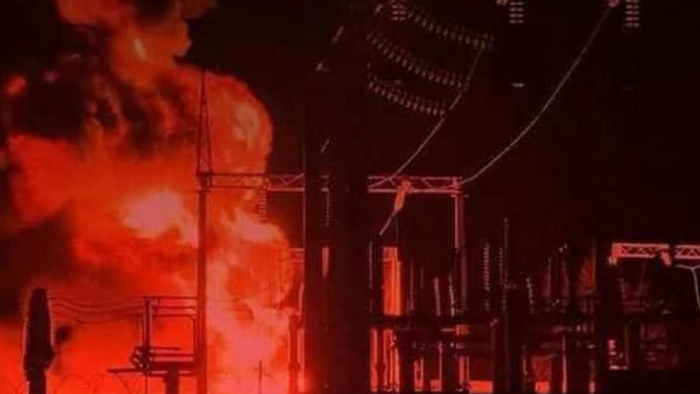On Friday, Russia executed a significant drone and missile strike on Ukraine, which was perceived as retaliation for Ukraine’s recent deployment of the US-supplied Army Tactical Missile System (ATACMS) at a Russian military base. Ukrainian President Volodymyr Zelenskyy reported that Russia unleashed a total of 93 missiles and nearly 200 drones in a coordinated attack aimed primarily at Ukraine’s already fragile energy infrastructure. This aerial assault marked one of the most extensive bombardments targeting the nation’s energy sector since the onset of the conflict nearly three years ago. Zelenskyy emphasized the scale of the attack’s impact, revealing that Ukrainian defense forces managed to intercept 81 missiles, including 11 cruise missiles that were shot down by Western-supplied General Dynamics F-16 Fighting Falcon fighter jets.
Zelenskyy condemned Russia’s actions as a blatant act of terrorism against innocent civilians, stating that such reckless assaults only exacerbate the suffering of millions of people across Ukraine. In light of these developments, he renewed his urgent appeal to the international community for both intervention and enhanced support for Ukraine. His assertions highlighted a growing sentiment that only a robust global response could effectively counteract the ongoing threat. “A strong reaction from the world is needed: a massive strike – a massive reaction. This is the only way to stop terror,” Zelenskyy articulated, underscoring the need for immediate action.
In a contrasting narrative, the Russian Defense Ministry issued a statement via its official Telegram channel, asserting that the retaliatory strike had successfully hit all targeted facilities. They described the attack as a precise operation utilizing high-precision long-range air and sea-based weapons, along with unmanned aerial vehicles (UAVs) to strike critical fuel and energy infrastructure in Ukraine. The Russian authorities also pointed to Ukraine’s prior use of American long-range missiles as justification for the escalation of their military campaign, framing their actions as not only necessary but inevitable in light of perceived threats to their military assets.
The escalation came just days after Ukraine’s forces launched their own offensive involving six ATACMS at a Russian airbase deep within Ukraine’s territory. In defending their domain, Ukrainian officials maintained that each of the missiles was accounted for and intercepted. This back-and-forth exchange of military aggression has further heightened tensions in an already fraught situation, reflecting the ongoing struggle for both nations to assert military capabilities and deter further attacks from the opposing side.
As the dust settled from the assault, Ukraine’s state-run energy company, Ukrenergo, issued warnings indicating that up to 50% of residential customers might experience power outages as a result of the destructive capabilities deployed in the attack. These developments have raised concerns over the potential humanitarian ramifications, as many civilians already endure the brunt of the energy crisis exacerbated by the war. The national infrastructure, crucial for daily survival, is continuously threatened, placing increasing pressure on already beleaguered citizens.
The recent exchange of strikes underscores the grave implications of international military support and the ongoing conflict trajectory. Ukraine’s reliance on Western military technology, such as the ATACMS, represents a significant aspect of its defense strategy against Russian aggression, while also provoking harsh retaliatory measures. As both countries engage in this tit-for-tat cycle, the need for diplomatic solutions and reinforced international solidarity grows more urgent. The precarious balance of power and the intensity of military engagements in the region call for a concerted global effort to restore peace and effectively address the humanitarian crisis facing millions in Ukraine.

